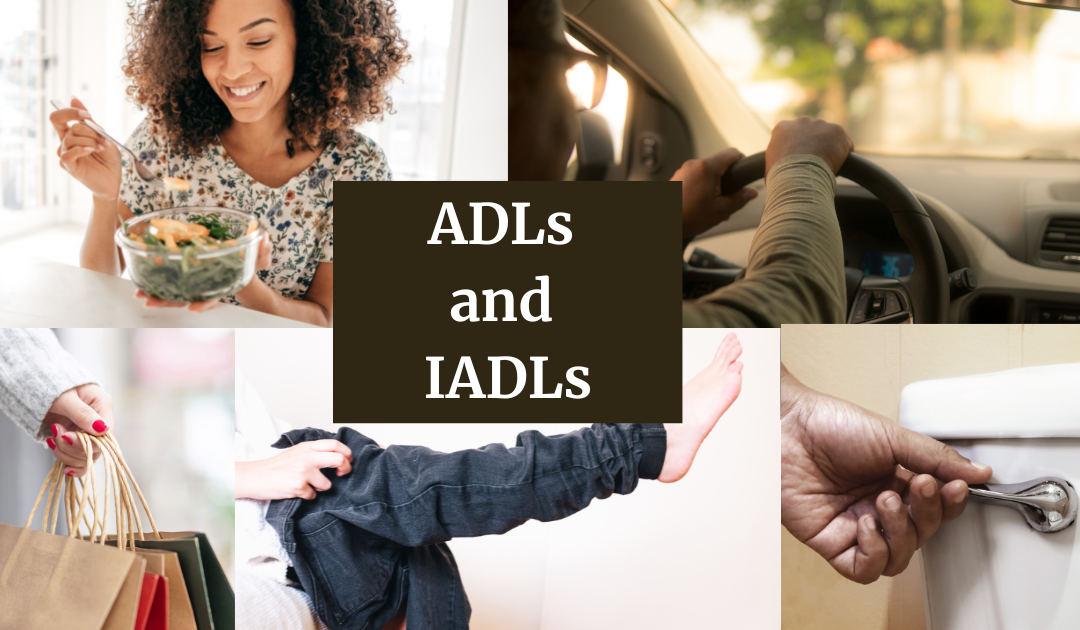As occupational therapy practitioners, ADLs are our bread and butter. They are the occupations that give us the title of occupational therapists.
ADLs are Activities of Daily Living, basic tasks that people do every day to function. IADLs are Instrumental Activities of Daily Living, higher level tasks that require more physical and cognitive skills than ADLs but are still essential to living independently and maintaining day to day life.
When someone has experienced illness, injury, has a congenital disability, or experiences the effects of aging, they may have difficulty completing ADLs and IADLs. Occupational therapists have a unique understanding of ADLs and IADLs including how to evaluate them and how to help people become more independent in performing them. This is what makes our role so important in a variety of settings.
Check out our other articles that explain how to evaluate ADLs and IADLs and indicate the level of assistance required.
What are ADLS?

Self Feeding/ Eating
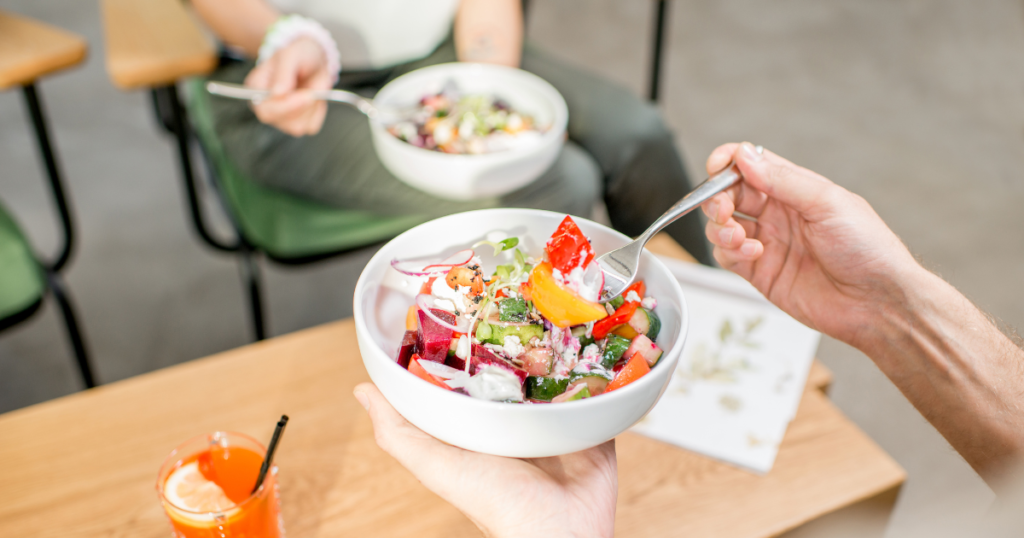
The act of bringing food or liquid to the mouth once placed in front of you. This also includes the ability to manage utensils (fork, knife, spoon, straw), serveware (plate, cup, napkin, etc), and packages/ containers.
This occupation DOES NOT include how the food is transported from where it was prepared to where it will be consumed or include how well a person manipulates the food inside their mouth and swallows.
Grooming and Oral Hygiene

Grooming activities can include brushing and styling hair, trimming nails, shaving, applying deodorant or other skin/ hygiene products, applying and removing makeup, and cleansing the face (skin, eyes, ears, nose).
Toileting
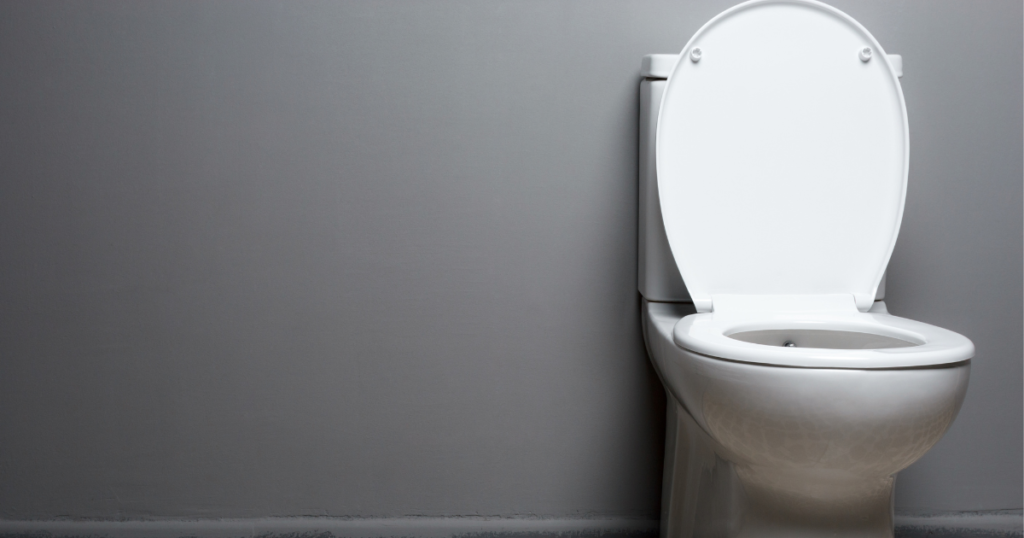
Oral hygiene is sometimes listed within grooming/ hygiene tasks and in some settings it is considered its own category. Oral hygiene involves cleansing of the structures of the mouth including teeth, gums, and tongue. It also includes cleaning, removing and inserting any dental orthotics and/ or prosthetics.
Toileting includes all the aspects that involve voiding or going to the bathroom. This includes the ability to enter into a bathroom, transfer onto and off of a toilet or set self up for use of urinal, manage clothing and lower body undergarments up and down, perform perineal hygiene (wiping of the front and back areas), flushing, performing hand hygiene and exiting the bathroom.
If an individual uses incontinent wear (pad, brief, pull ups) this also includes the ability to identify the need to change out these items once solid, dispose of soiled items and put on a new item. If an individual toilets using a bedside commode or other self-contained 3 in 1 commode, toileting includes the ability to dispose of contents and add a new liner for future use.
Additionally if an individual has a catheter, colostomy or other agents for bladder or bowel control, toileting includes management of these devices.
Dressing

Fairly straightforward, the ability to put on and remove clothing. Dressing is typically broken down into upper body dressing, lower body dressing, and footwear. The ability to “get dressed” also includes whether a person can identify what clothing they want to wear and gather the items from wherever they are stored (closet, drawer, hamper, floor, etc). Putting on and taking off accessories is also included under the scope of dressing including jewelry, belts, and suspenders.
The ability to put on or take off personal devices (hearing aids, glasses), prosthetics, orthotics or splits is also included under the area of dressing.
Bathing
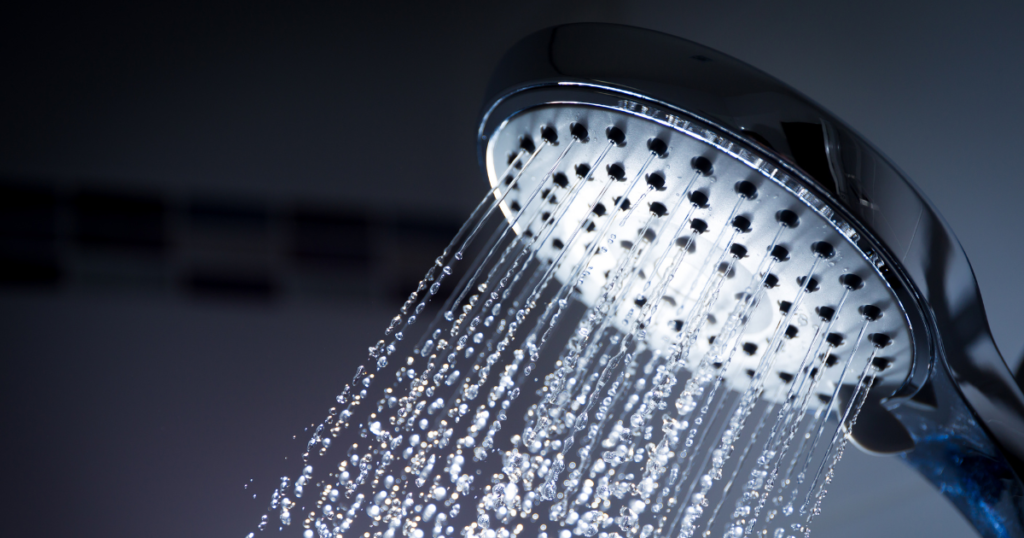
The process of cleansing the body including soaping, rinsing, and drying. Bathing also includes transfer in and out of a bath or shower and on/off of any DME used (shower chair, tub transfer bench). Another aspect to consider with bathing includes how a person gathers and transports supplies into and out of the bathing area (towels, shampoo, wash cloths).
If an individual has wounds, incisions, or parts of the body that must be covered with moisture barrier prior to bathing they must also be able to complete this task to be considered independent. It’s important to note that some individuals only perform sponge baths at sink side or bed baths due to either environmental or physical limitations. If this is the case the ability to set up and clean up these tasks is included in the bathing process.
Other ADLs:

Transfers (General): How a person moves from one position to another. Includes moving around in bed (bed mobility), getting in and out of bed, up from a chair, in and out of a car, down to and up from the floor, etc.
Functional Mobility: How a person moves themself from one place to another. Functional mobility can be broken up into household distances (within a room or from one room to the next) and community distances (around the block, from the parking lot to doctors office, around a grocery store). Also include transporting items and use of ambulation devices (cane, walker, wheelchair) if needed.
What are IADLs:

Meal Preparation
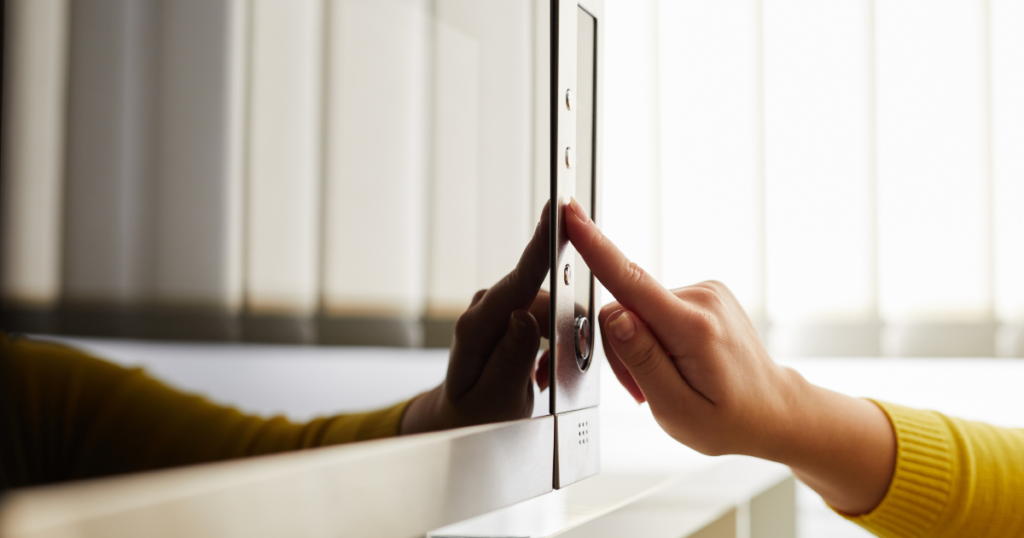
Deciding what to make, gathering the appropriate ingredients and supplies, preparing the food or drink, cleaning up the food and tools used.
Medication Management

Appropriately taking medications as directed by a physician. This occupation also includes collaborating with health care professionals to report any side effects, refilling medications before running out and properly disposing of discontinued medications.
Financial Management
Involves understanding current financial situation. Tracking income vs spending. Paying taxes. Paying bills. Saving money. Includes the ability to use different transaction methods (credit/ debit cards, checks, digital banking).
Health Management
Managing aspects of health such as physical fitness, nutrition, and mental health. Also includes care and maintenance of personal devices (hearing aids, glasses, contraceptive devices, glucometers, O2 tanks, etc.), managing and assessing symptoms when feeling unwell, and communication with the healthcare system (making and attending doctors appointments, contacting insurance providers).
Household Management
Cleaning, laundry, organization, managing yard or garden, repair of personal possessions.
Shopping
Groceries, clothing, toiletries, etc. Includes planning and list making. Obtaining items within the store and transporting to check out. Selecting appropriate payment methods. Transporting items away from the store. Can also include proper use of online shopping methods.
Care of Pets
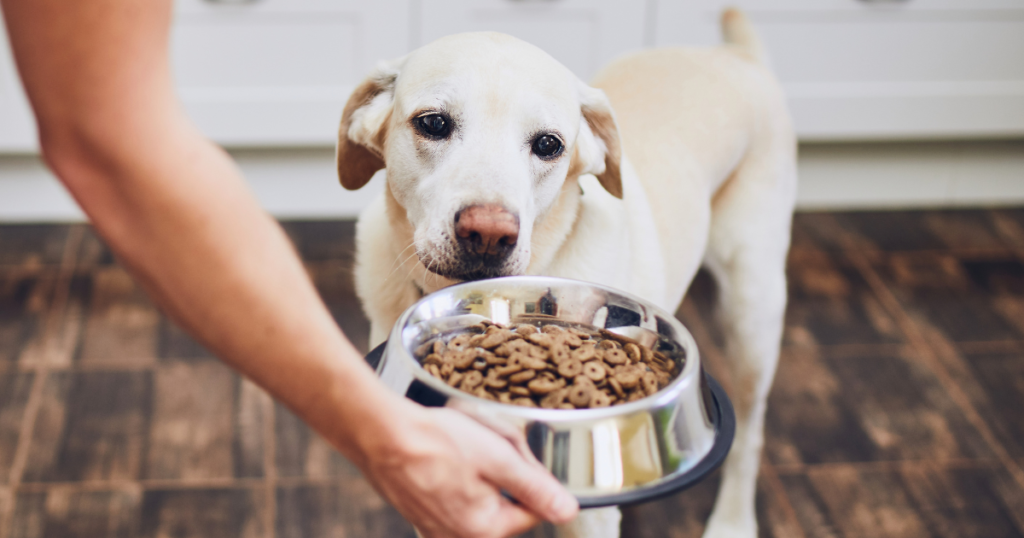
Providing appropriate food, water, shelter to pets. Also includes arranging medical care and providing opportunities for exercise.
Care of Others
This area involves a variety of sub- occupations but in general can include care of children, spouse, other adult, or elderly persons. Can be formal and paid or informal and unpaid.
Driving/ Community Mobility: Driving specifically includes the ability to operate and maneuver a motor vehicle to get from place to place. Community mobility is broader and includes navigation within a community using public or private transportation. Can also include walking, biking, riding a bus, using rideshare services, or riding a train.
Other Considerations:
It’s important to consider all aspects that go into an individual’s ability to complete ADL tasks vs the scoring system used at your setting or facility. For example, when completing Section GG as part of the Minimum Data Set Medicare Assessment used in skilled nursing facilities, bathing does not include transferring or the ability to wash hair. While a patient may be “independent” according to this scoring system you must consider their functional capabilities/ deficits and requirements to safely return to their prior living environment.
Consider this scenario, a person lives alone and has a walk-in shower without any DME. They are currently a patient of yours at a skilled nursing facility after undergoing a total hip arthroplasty. After working with you for a few weeks they are able to wash, rinse, and dry themselves while maintaining all of their precautions once seated on the shower chair. They are agreeable to purchase a shower chair prior to returning home. You practice transfers to and from the shower chair simulating their home setup during your treatment sessions, but they require contact guard assistance to complete the transfer safely by the time of their discharge. Although you are able to score them as “independent” in the bathing portion of Section GG, you must consider whether or not they are actually independent with this task then and make the appropriate recommendations during their discharge planning.
